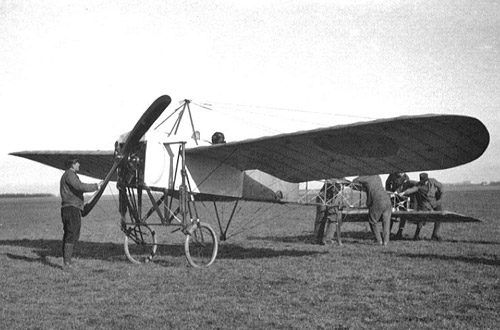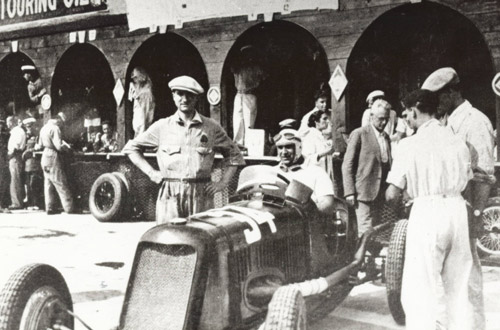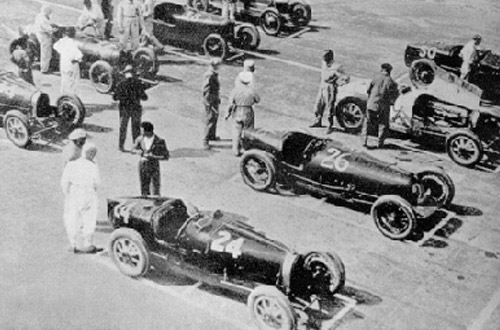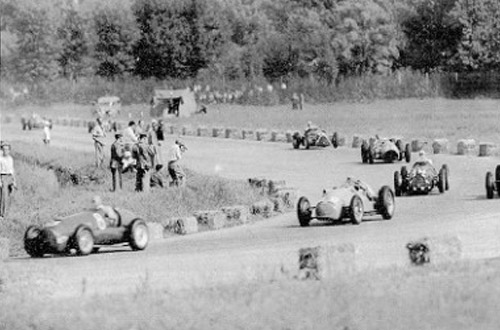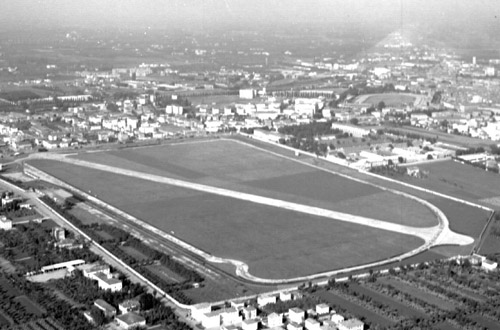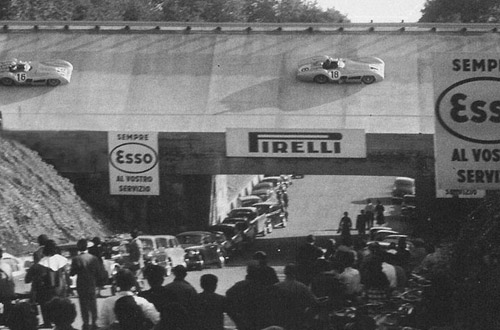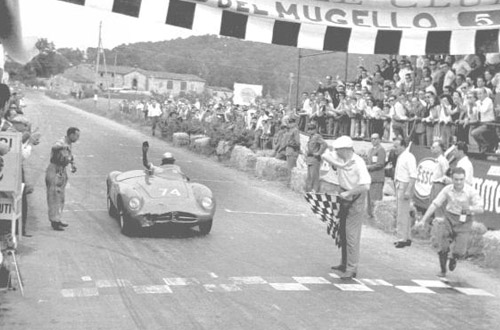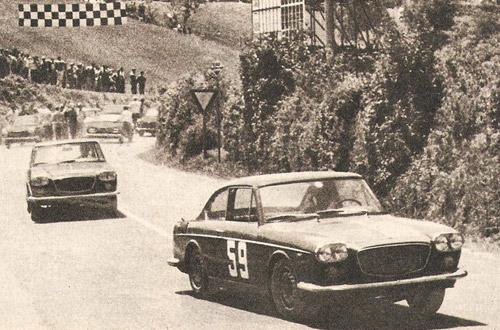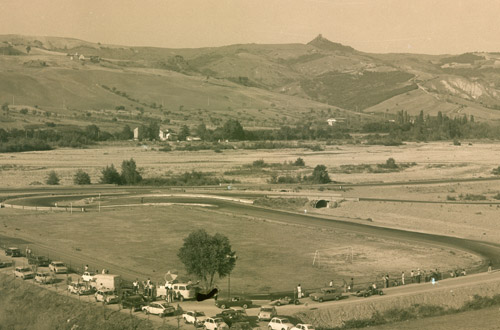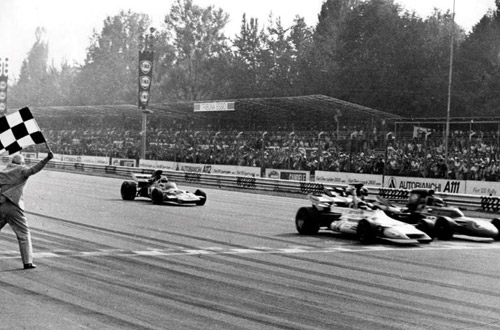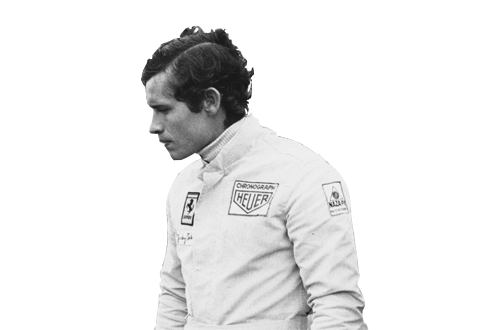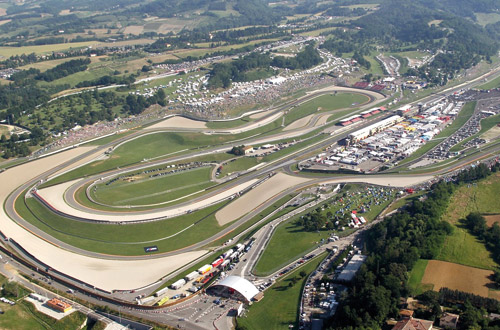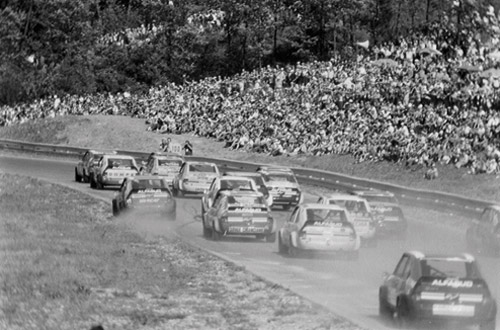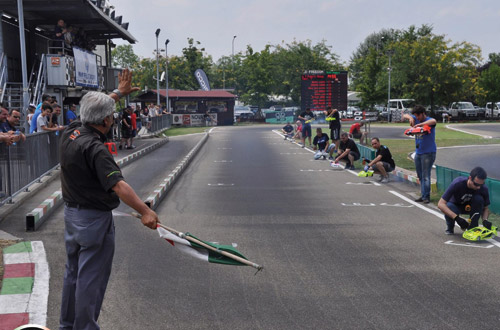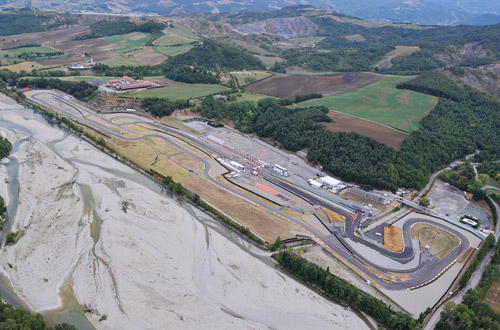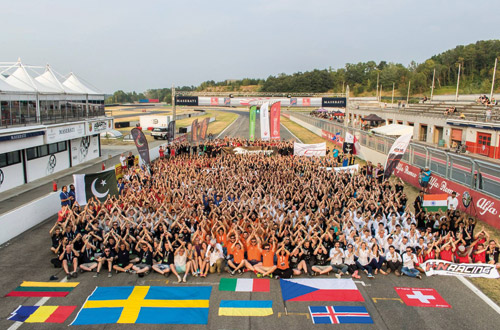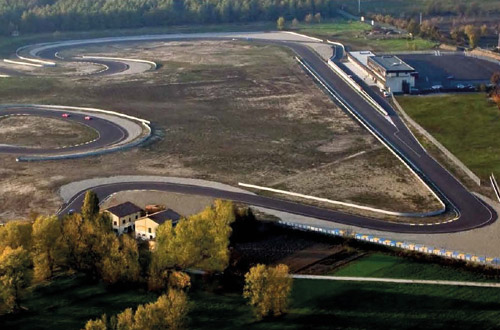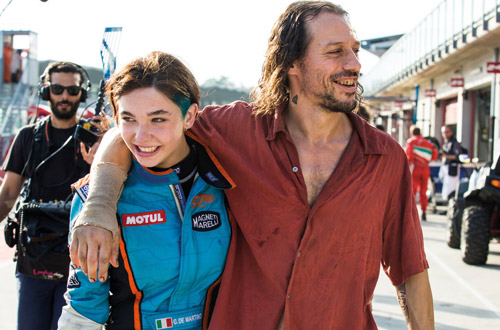History
Year by year, the dates and essential moments that have contributed to writing the Italian motor history.
From the creation of the first motors to the present day, Italian history has gone hand in hand with the technological development and the changes regarding design experienced by the motor, motorcycling and aeronautics industries. In the Motor Web Museum timeline, a year by year history develops of the passionate bond between the Italian Peninsula and the motors and production and industrial excellences it has generated. A unanimous and fascinating history, involving all the realities connected to the "National Network of Motor Cities".
Early history
While the world begins to discover the wonders of the combustion engine and the first vehicles we can define as the "ancestors" of automobiles and motorcycles, personalities are emerging in Italy who, in the first decades of the new century, will mark important steps in motor sport and in the construction of sophisticated vehicles, able to make the memory of the first noisy and dangerous prototypes fade.
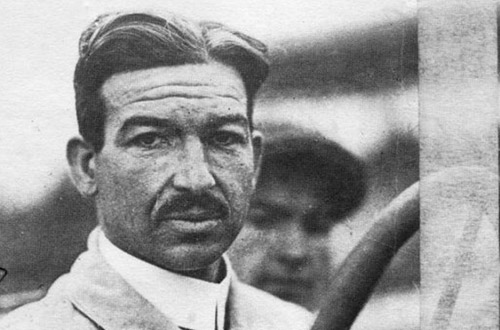
1887
Birth of Alfieri Maserati, founder of the "House of the Trident", based in Modena.
Sarà il fondatore dell'omonima casa automobilistica, aiutato nell'impresa da molti dei suoi sei fratelli.
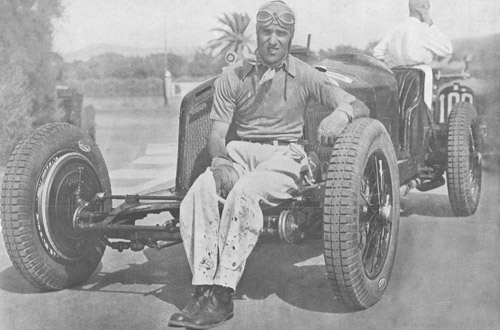
1892
on November 16th, Tazio Nuvolari was born
A Castel d’Ario, nel mantovano, vede la luce il futuro, leggendario campione di motociclismo e automobilismo.
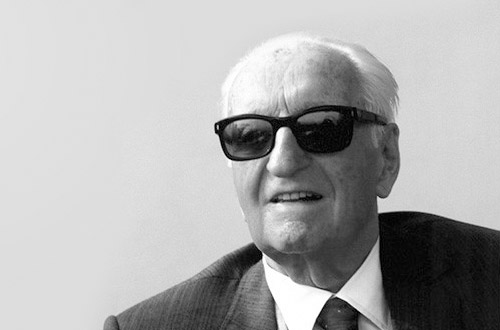
1898
On February 18th, Enzo Ferrari was born in Modena.
Il costruttore viene alla luce il 18 febbraio a Modena nella casa-officina oggi sede del Museo a lui dedicato.
Early 20th Century
Thirty years of impetuous development. Therefore we can summarise the first glimpse of the twentieth century in the motor and aeronautics industry. The growing interest of all the social classes for the marvels of quick mobility and with mechanical propulsion and the active policies of governments in this period throughout the West, lead shortly to a continuous succession of new inventions that uninterruptedly change paradigms.
There is also a World War in the middle of it bringing investments and a strong demand of increasingly evolved and efficient vehicles; very soon, the new technological solutions become a part of the motor industry even in peacetime, enabling prodigious steps forward. The transition from the first aircraft with wooden structures to planes with high-performing steel structures is quick; from the first racing car prototypes, motor sport starts to invent circuits to hold ever more frequent and diffused races between modernly -organised stables, able to put fast and stable cars on the track; from the first still awkward models, motorcycles become elegant and powerful, true pieces of industrial design.
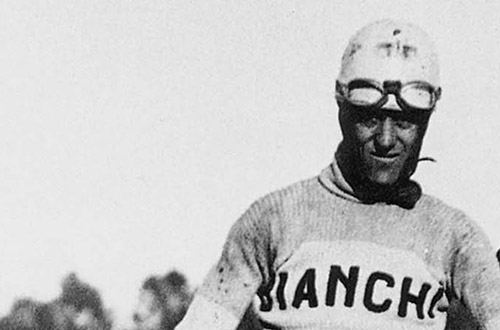
1900
Stanguellini Automobili was founded - the first four-wheel enterprise in Modena.
Nasce a Modena la casa costruttrice che sarà celebre per la ricerca della leggerezza e dell’aerodinamicità.
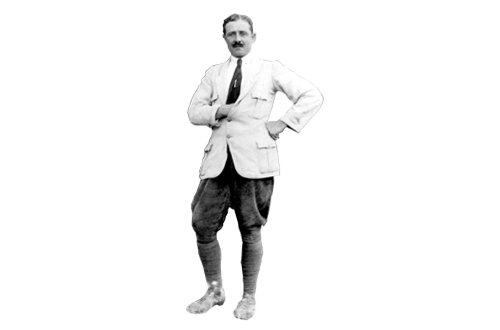
1907
Giovanni Agusta founded the “Agusta” company for the production of aircrafts
Il conte Giovanni Agusta fonda a Cascina Costa di Samarate la società Agusta per la produzione di aeromobili.
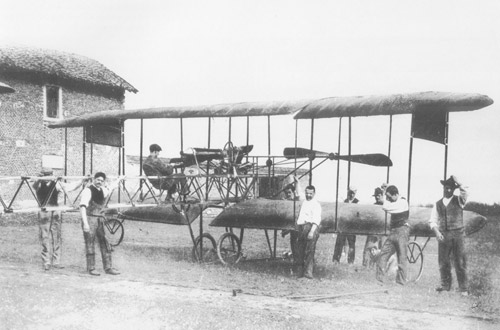
1910
The first aircraft of the Officine Caproni took off from the moorland of Malpensa.
Il primo velivolo delle officine di Gianni Caproni compie decollo e atterraggio nella brughiera di Malpensa.

1913
Birth of the Gabardini seaplane, the first in history.
L’ingegnere progetta e testa il primo idrovolante, poi fonda una scuola di pilotaggio e il suo stabilimento.
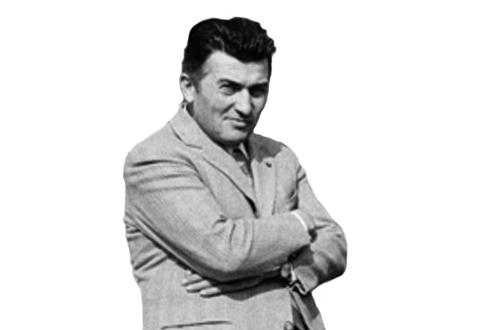
1913
Birth of Ferruccio Lamborghini, founder of the carmaking company that bears his name.
Sotto il segno del Toro, nasce a Renazzo di Cento (FE) l’uomo che entrerà nella storia delle auto sportive.
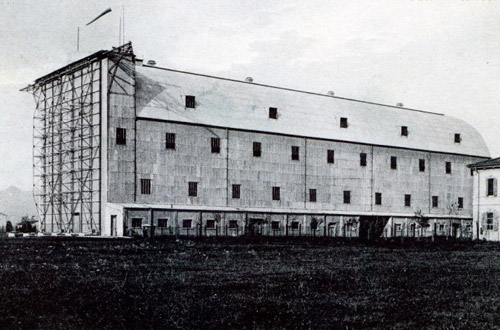
1913
Pontedera became headquarters of an air station for zeppelins
Grazie alla sua posizione e ai suoi collegamenti, la città toscana viene scelta per far atterrare dirigibili.
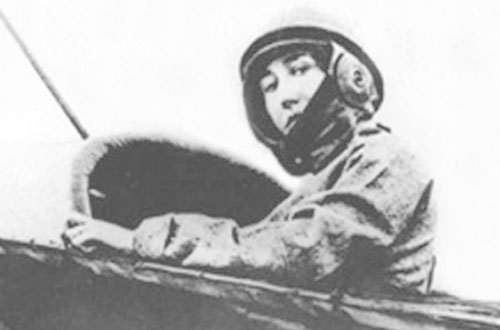
1913
Rosina Ferrario is the first Italian woman and the eighth woman in the world to obtain a pilot license.
La milanese è la prima donna italiana e l'ottava al mondo a ottenere il brevetto di pilota di velivoli.
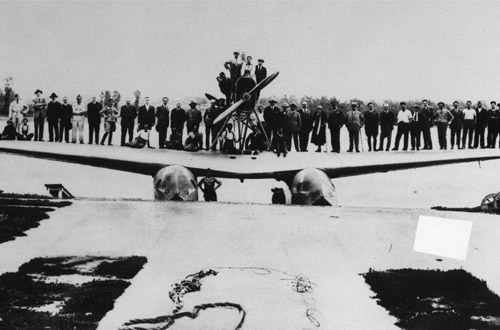
1915
Foundation of SIAI Marchetti, a military aircraft manufacturer
Apre la fabbrica varesina che legherà il suo nome a famosi velivoli da guerra, come lo Sparviero e il M 345.
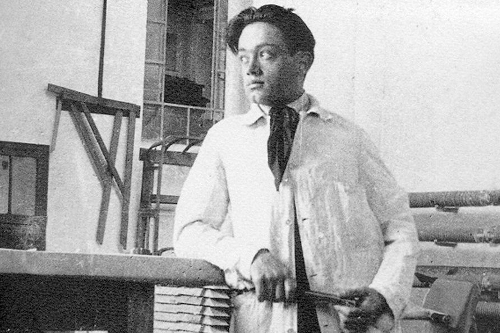
1918
Nuova Storie Evento Page-en
Il futuro designer di automobili Flaminio Bertoni comincia la sua carriera presso l’antenata di Aermacchi.
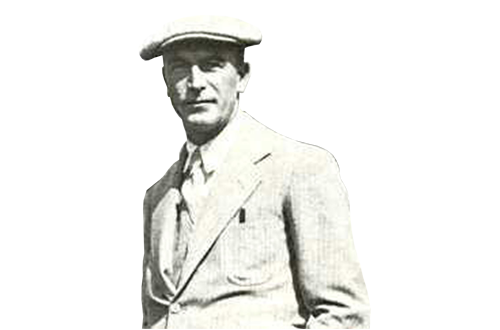
1919
The Milanese Carlo Guzzi tunes a new motorcycle destined to be talked about.
Carlo Guzzi e Giorgio Parodi fondano la Società Anonima Moto Guzzi: lo stemma è l'aquila ad ali spiegate.
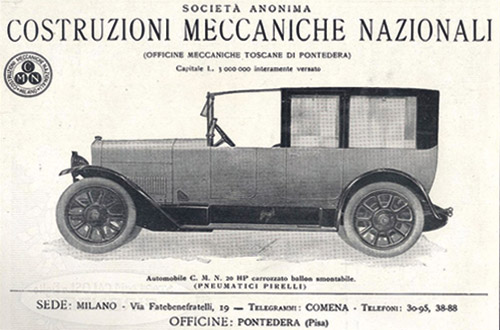
1920
Costruzioni Meccaniche Nazionali opened a head office at Pontedera
La casa con la quale debutta come pilota Enzo Ferrari sposta la sede produttiva nella cittadina toscana.
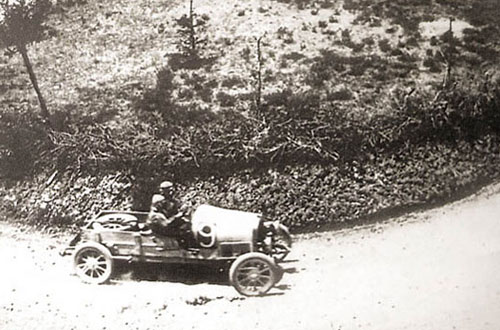
1920
Races started again on the Mugello road track, and will continue for another nine years.
Riprendono le corse sul circuito stradale toscano dopo la guerra: si correrà per i successivi nove anni.
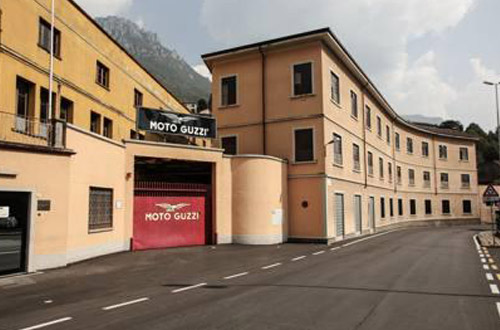
1921
Vittorio Emanuele Parodi, his son Giorgio and their friend Carlo Guzzi found the “Società Anonima Moto Guzzi” (Anonymous Moto Guzzi Society): the debut is very promising.
Il 15 marzo Carlo Guzzi lascia Genova e sposta il suo stabilimento nella tranquilla Mandello del Lario.
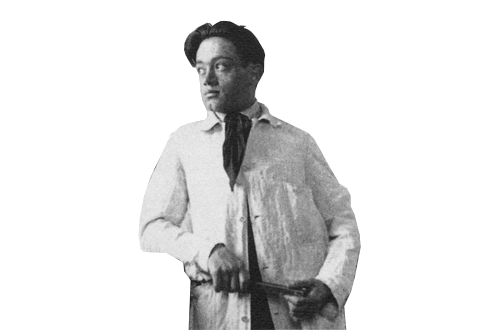
1921
The car designer Flaminio Bertoni began his career at Carrozzeria Macchi, the ancestor of Aermacchi
Il futuro “stilista di automobili” della Citroën inizia a lavorare alla Carrozzeria Macchi, poi Aermacchi.
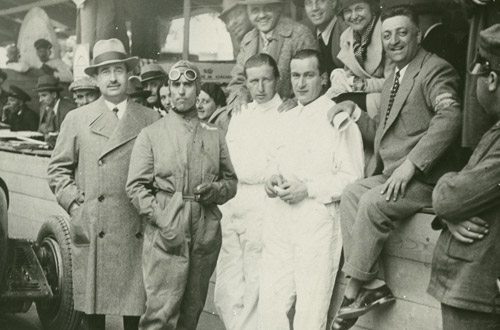
1924
Tazio Nuvolari meets Enzo Ferrari
Due leggende si conoscono in pista: sei anni dopo, il Drake lo vorrà come pilota della sua neonata scuderia.
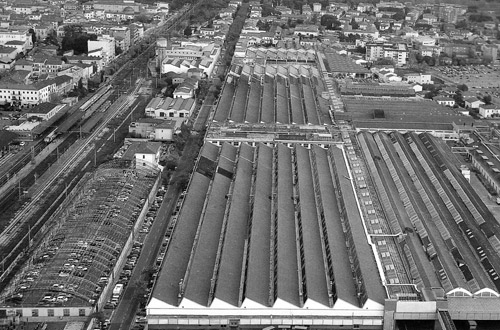
1924
Rinaldo Piaggio transferred part of his aircraft company to Pontedera
L’azienda, dal 1884 a Sestri Ponente, inizia a produrre nei locali delle ex Costruzioni Meccaniche Nazionali.
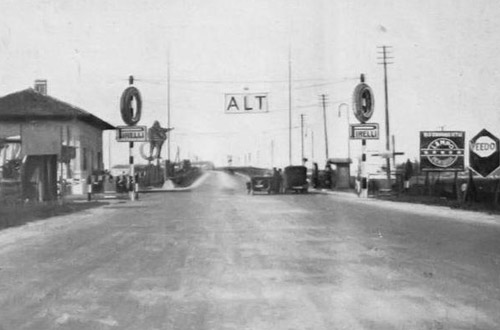
1924
The first motorway in the world was inaugurated, the “Milano – Laghi” designed by Piero Puricelli
Viene inaugurata l'Autostrada dei Laghi progettata da Piero Puricelli: è l’inizio di una rivoluzione.
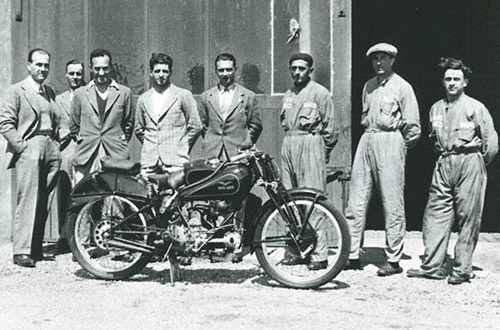
1927
Giuseppe Guzzi invents the elastic frame and tests it by driving up to Cape North.
Un’innovazione che il fratello di Carlo Guzzi, Giuseppe, inventa e testa con un viaggio fino a Capo Nord.
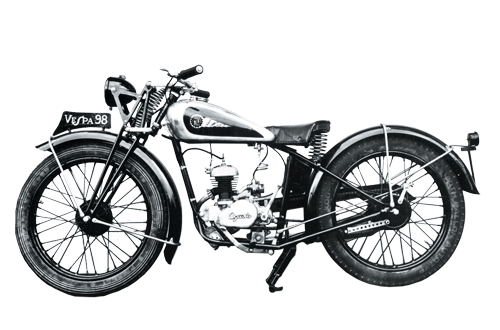
1927
Agusta begins to produce motorcycles
Alla morte di Giovanni Agusta, la moglie e il figlio decidono di convertire la produzione verso le due ruote.
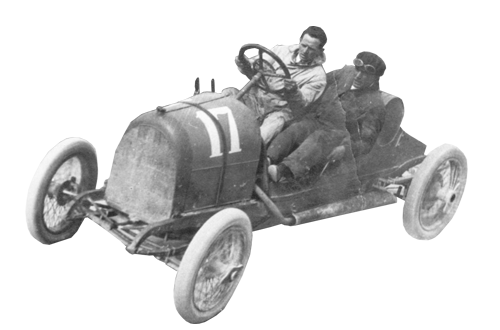
1928
Emilio Materassi, bus driver and race enthusiast from Mugello, lost his life in a tragic accident.
Sul circuito di Monza trova la morte il campione toscano, nato sportivamente sulle strade del Mugello.
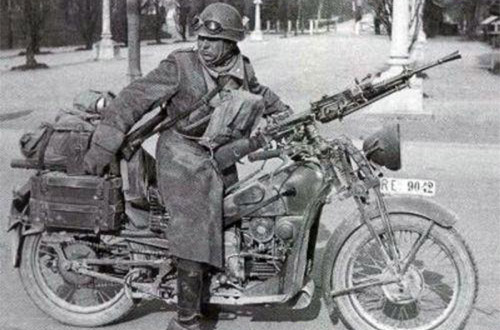
1929
To overcome the economic, crisis Moto Guzzi begins to produce military motorcycles and three-wheeled vans for the army.
Nascono mezzi armati come l'emblematico Alce e il Trialce, un motocarro smontabile e paracadutabile.
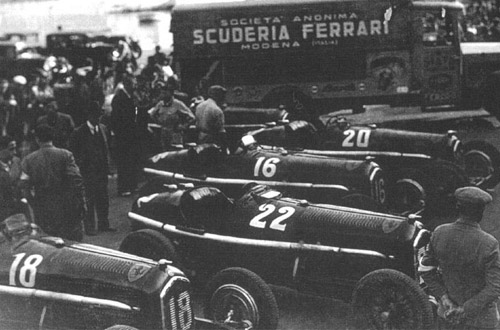
1929
Enzo Ferrari opens the “Scuderia Ferrari” (Ferrari racing team) in Modena, a branch of Alfa Romeo, for which it will adopt the symbol of the “Prancing Horse”.
Enzo Ferrari fonda come filiale di Alfa Romeo la scuderia che entrerà nella leggenda dell’automobilismo.
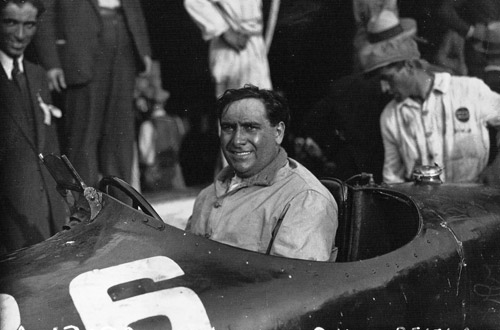
1929
Alfa Romeo's performance at the Mugello Circuit is being criticised, and his driver Giuseppe Campari makes a bet
La gara al Mugello finisce con un’aspra querelle tra Giuseppe Campari e i colleghi Biondetti e Brilli-Peri.
1930s to 50s
Once more, a World War and subsequent peace - this time, much longer lasting in the Western world – is the driving force of a new season of technological developments in the motor industry. The period spanning the conflict is a golden age for the flourishing of manufacturers and products destined to become global brands. Italy discovers it can not only apply its technological knowledge to the motor industry, but also its special talent for creating beautiful and appreciated things, which, several decades later will be indicated with the term "Made in Italy".
At the end of the 50s, the motor world has changed forever: the mass production of four and two-wheeled vehicles starts, motorising Italians, projecting them into a previously unknown dimension of independence and freedom; luxury sports cars are an increasing market in which Italian manufacturers dominate, car and motorcycling competitions become real world championships where great international companies challenge each other and the new adrenalin and speed stars shine: the drivers and racers.
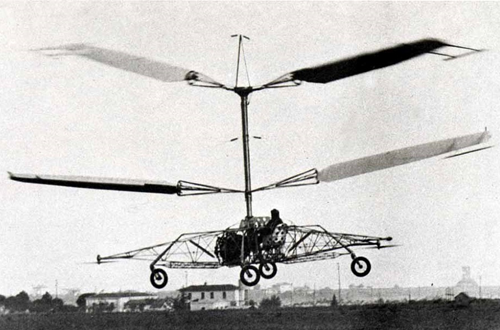
1930
Approval of the first helicopter: the D'AT3, designed by Corradino D'Ascanio and equipped with a seven-cylinder, 150 hp FIAT A 50 radial engine (6,600 cc)
È il D'AT3 progettato da Corradino D'Ascanio con motore radiale FIAT A 50, sette cilindri 150 CV e 6600 cc.
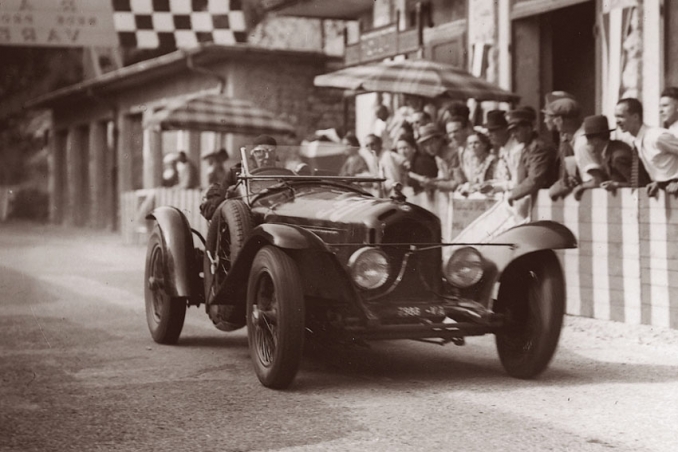
1931
First edition of the Coppa Tre Laghi – Varese – Campo dei Fiori
Nasce la gara velocistica molto popolare fra le guerre, oggi diventata un famoso raduno di vetture d'epoca.
Tag:
Quattro Ruote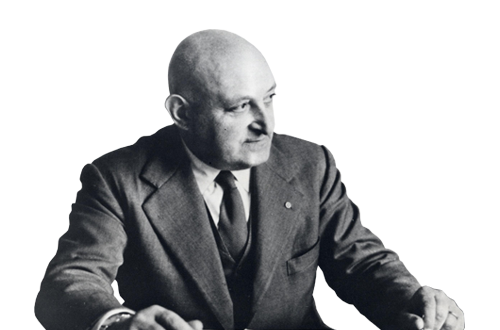
1932
Corradino d'Ascanio arrived at Piaggio
Già inventore del primo elicottero e dell'elica a passo variabile, sarà il futuro inventore della Vespa.
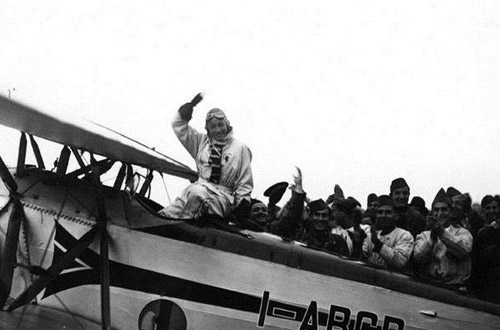
1933
The aircraft Caproni Ca113 established the record for inverted flight
Tito Falconi con il Ca.113 copre la distanza tra St. Louis e Chicago in poco più di 3 ore in volo rovescio.
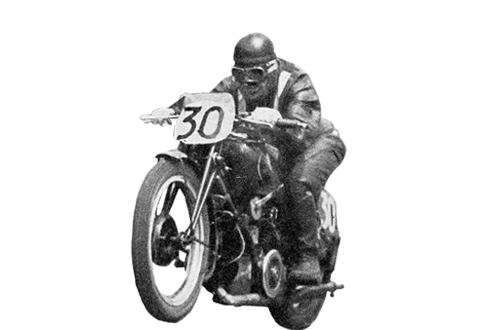
1935
Moto Guzzi wins the Tourist Trophy: an important triumph in its agonistic history.
Da sempre attiva nelle corse, Moto Guzzi coglie la sua prima importante affermazione internazionale.
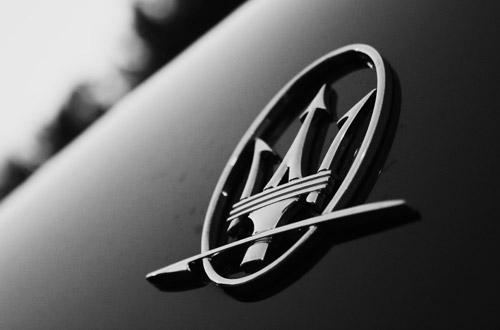
1937
The transfer for Maserati from Bologna to Modena begins.
Fondata a Bologna nel 1914, la casa del Tridente si sposta a Modena per continuare la sua storia di successo.
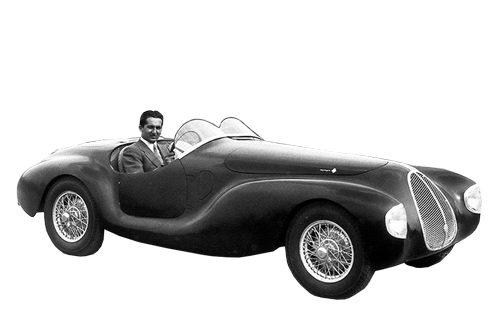
1939
Ferrari’s ancestor, the Auto Avio Costruzioni company, opens in Modena.
Il primo passo verso verso l'industria che rivoluzionerà il comparto delle auto da corsa e gran turismo.
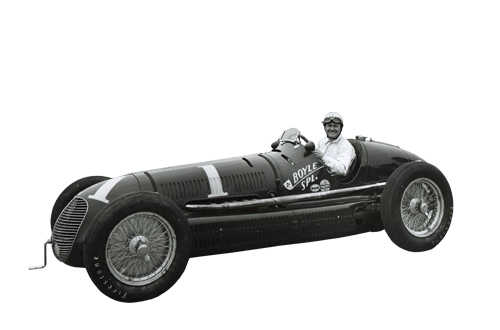
1940
Maserati conquered the Indy 500 for the second time, and it’s immediately a record.
Il Tridente è l'unica casa italiana ad aggiudicarsi la 500 Miglia di Indianapolis, e per due anni consecutivi.
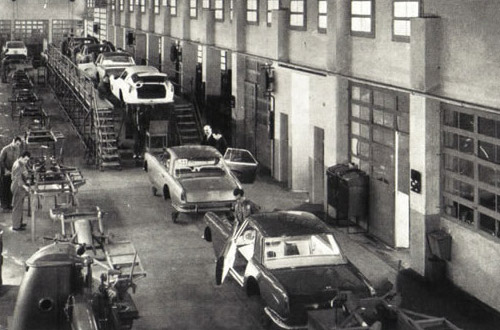
1943
Enzo Ferrari moves his business to Maranello, which at the time is called Auto Avio Costruzioni.
A causa della guerra, la Auto Avio Costruzioni si sposta da Modena a Maranello: inizia un legame leggendario.
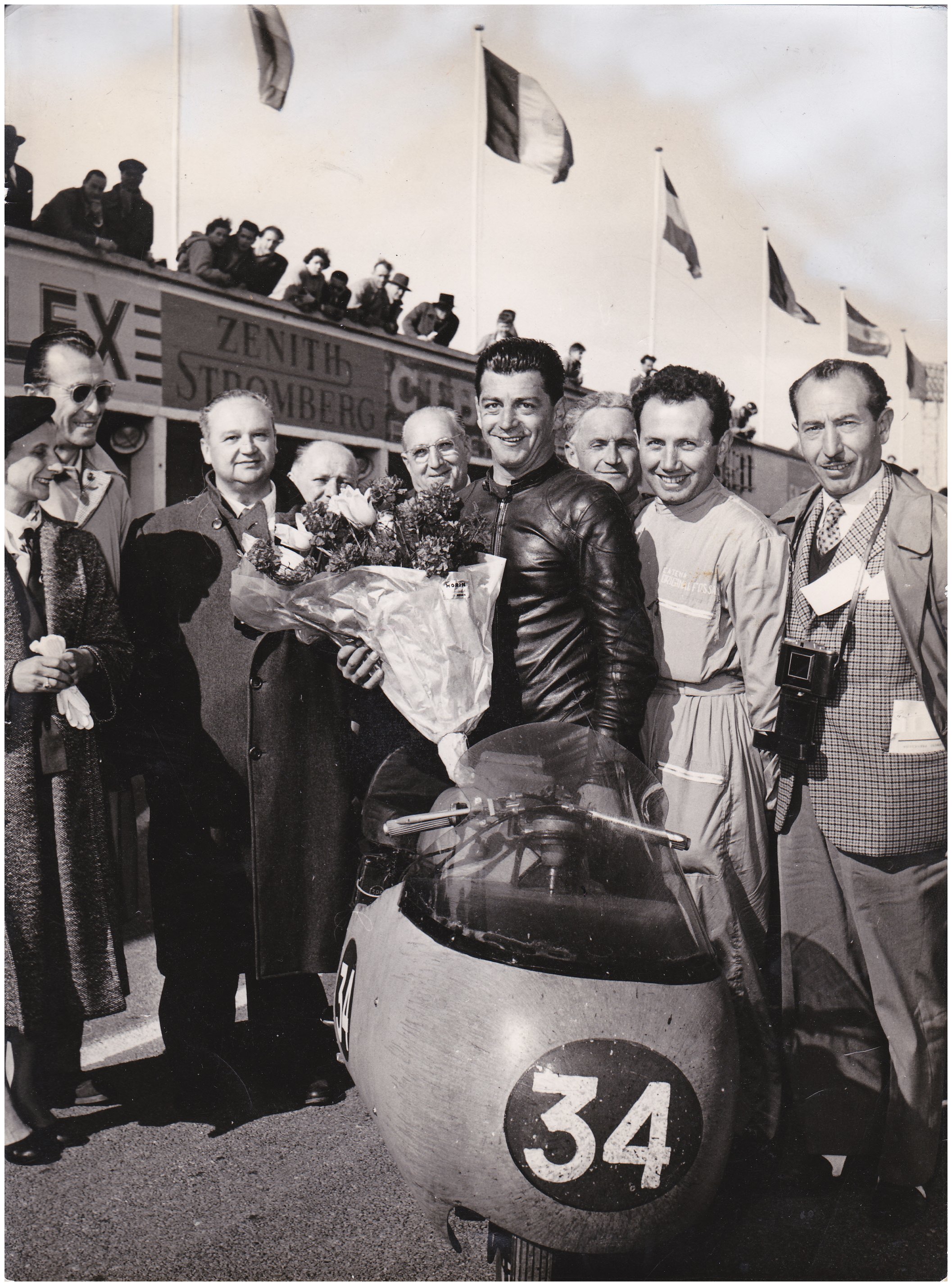
1945
Duilio Agostini is hired at Moto Guzzi: he is set to become one of its greatest racers.
Mandellese, Agostini entra in azienda come disegnatore, ma diventa presto collaudatore e poi pilota vincente.
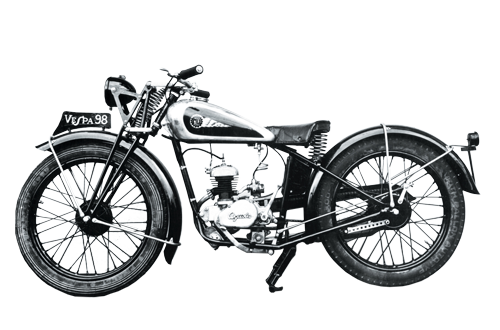
1945
The first model of the MV Agusta motorcycle was produced
La nuova moto rilancia l'impresa di Cascina Costa, affermandosi sul mercato e vincendo subito molte gare.
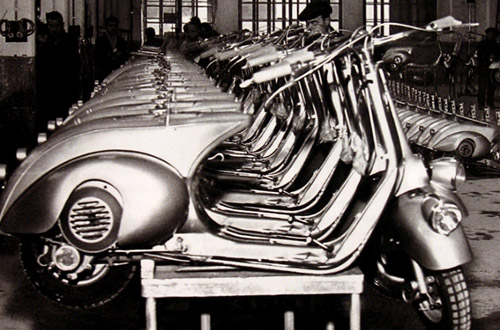
1946
The Vespa was patented and achieved an immediate success
Dal genio di Corradino d'Ascanio e dalla riconversione industriale nasce la rivoluzione italiana su due ruote.
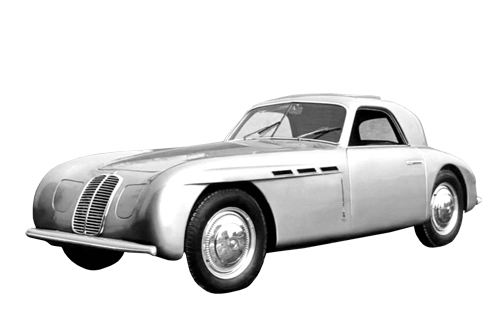
1947
The first Maserati road model is constructed.
È il modello A6: motore da 1500 cc e 65 CV, disegnato da Pininfarina e prodotto in soli 58 esemplari.
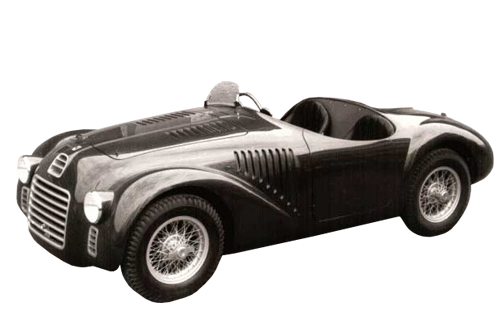
1947
Nuova Storie Evento Page-en
Dai cancelli di Maranello esce la 125S, prima vettura prodotta ufficialmente con il marchio Ferrari.
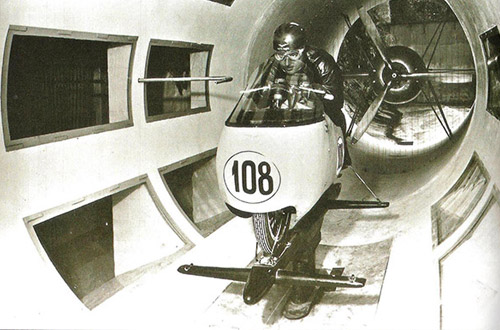
1950
Giuseppe Guzzi designs the first Wind Tunnel in the world for aerodynamic testing of motorcycles.
Fortemente voluta da Carlo Guzzi e progettata dal fratello Giuseppe, è la prima al mondo per i motocicli.
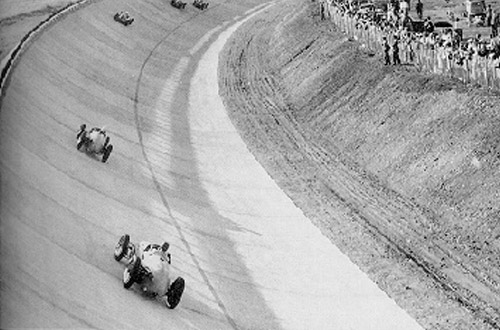
1950
The Formula 1 championship debuts in Monza, Nino Farina gains trophy.
Il pilota italiano vince il primo G.P. d’Italia e il primo campionato assoluto di Formula 1 su Alfa 158.
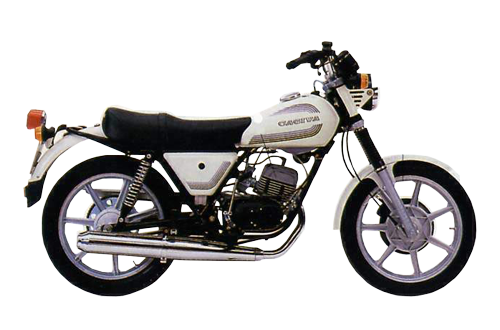
1950
Giovanni Castiglioni founded the Cagiva company, a small metal hardware manufacturer
Giovanni Castiglioni fonda un'azienda di minuteria metallica, futura protagonista nel mondo delle due ruote.
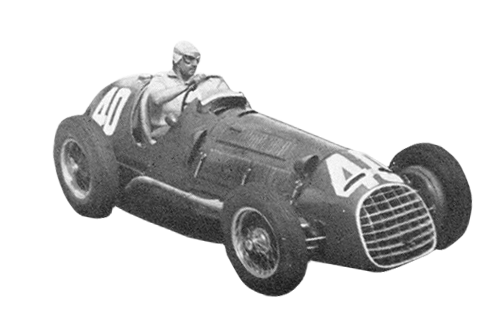
1950
Nuova Storie Evento Page-en
La Scuderia del Cavallino corre il suo primo gran premio nella massima categoria automobilistica a Monaco.
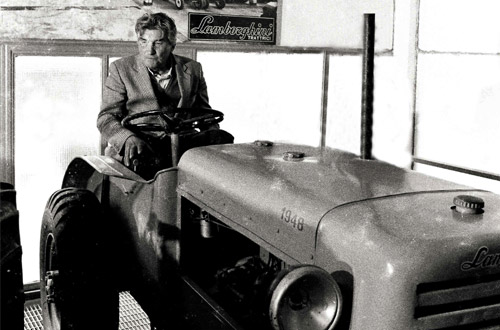
1951
Founding of Lamborghini Tractors in Cento
A Cento Ferruccio Lamborghini inizia a costruire trattori per un settore agricolo bisognoso di ripartire.
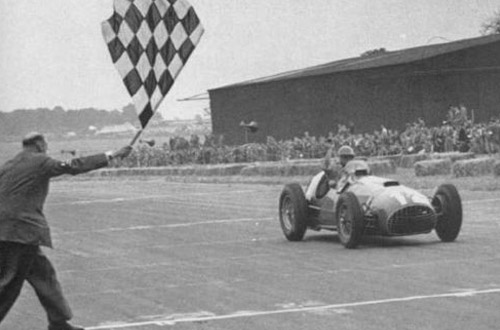
1951
From the gates of Via Abetone Inferiore emerges the 125 S, first car with the Ferrari emblem.
L’argentino vince il Gran Premio di Gran Bretagna, il primo per la Ferrari, davanti a Fangio su Alfa Romeo.
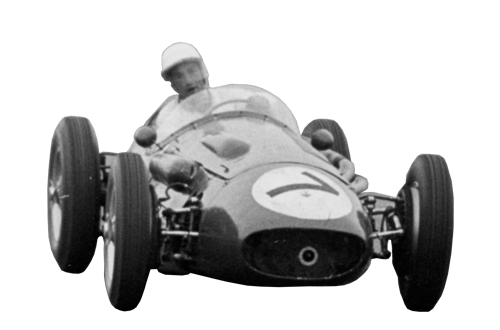
1953
Maserati conquers the first victory at the Grand Prix with Manuel Fangio.
L’argentino Juan Manuel Fangio trionfa con la sua A6GCM nel Gran Premio d’Italia sul circuito di Monza.
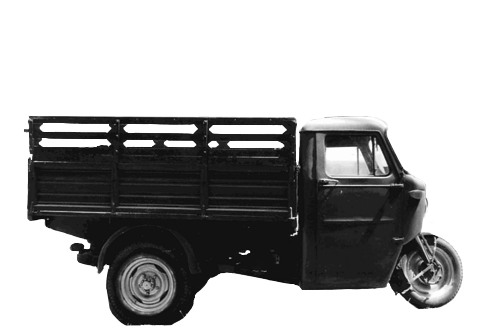
1956
Ercole, Guzzi’s most famous three-wheeled van.
Moto Guzzi si afferma anche come produttore di mezzi agricoli e motocarri grazie a questo popolare modello.
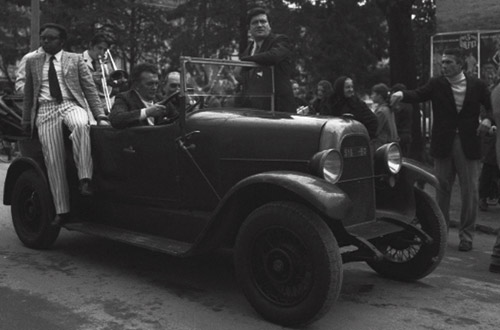
1956
The historical automobiles collected by Domenico Gentili arrive in San Martino in Rio: it is the beginning of a historical collection.
Le auto storiche di Domenico Gentili arrivano in paese: è l'inizio di una collezione che diventerà storica.
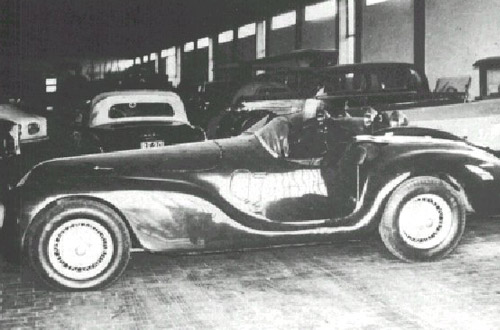
1958
In the San Martino in Rio collection there is an exceptional car in arrival: the Auto Avio 815, foreparent of the first Ferrari.
La prima macchina costruita da Enzo Ferrari nel 1940, ancora priva del Cavallino, entra nella collezione.
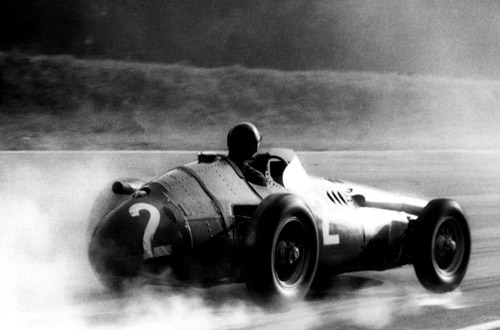
1958
Maserati retires from the races.
Il Tridente dice stop alle corse per problemi finanziari e nell’ultima corsa Fangio trionfa al Nürburgring.
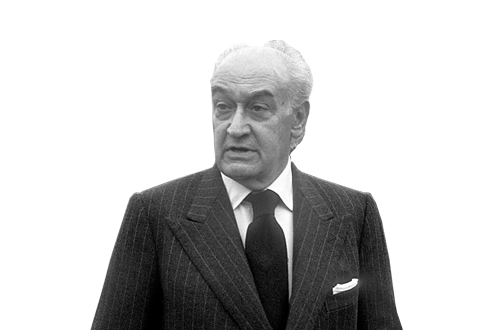
1959
The De Tomaso plant opens in Modena: it will remain active for 45 years.
Pilota e imprenditore argentino, Alejandro de Tomaso si aggiunge ai protagonisti dell’automobilismo modenese.
The 60s
The formidable "sixties" are a division in the history of motors: a decade of technological and design innovations, while the winds of modernisation that blow in society influence even the choices of car manufacturing companies and the image of motor sport. For the first time, Hollywood takes an interest in the racing world, celebrating the adrenalin and the glamour side, while new brands and models emerge, destined to change the concept of a sports car forever. There is also no lack of great two-wheeler challenges, as the famous 1966 African crossing, made by the journalist Roberto Patrignani riding his Moto Guzzi.
Alongside the challenges and new ideas that open new frontiers to explore for the motor world, the Sixties is also a moment in which enthusiasts begin to reflect on the history and on the existence of a motor culture. It is exactly in this period that the first examples of museums collecting vintage cars emerge, with the aim of preserving and handing down the events of the pioneering era of motors.
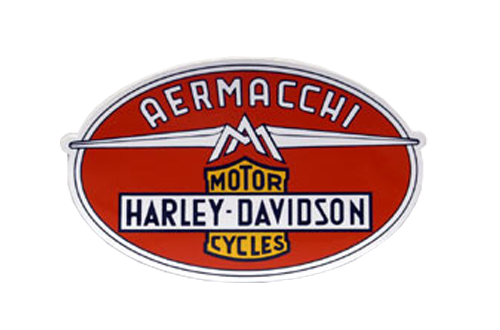
1960
The Varese firm Aermacchi set up a joint venture with Harley-Davidson
La storica azienda varesina inizia una collaborazione con la casa di Milwaukee destinata a durare fino al ‘72.
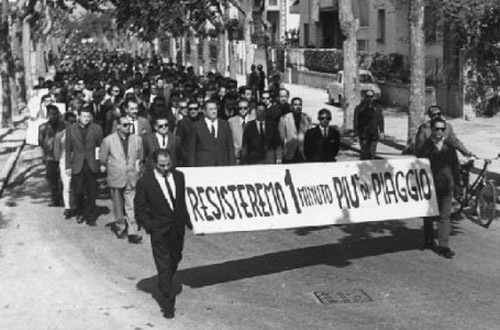
1961
In Pontedera social tensions broke out in the Piaggio’s “Scioperone” (big strike)
Mentre la Vespa vola, alla Piaggio esplodono tensioni sociali che sfociano in una lunga astensione dal lavoro.
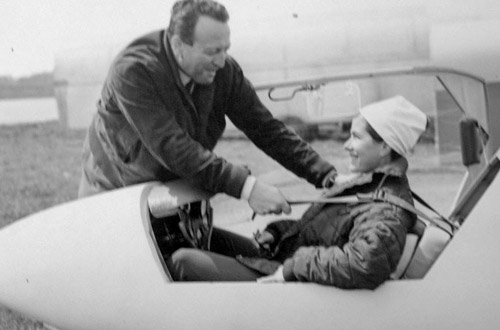
1961
Foundation of the Adele Orsi Aero Club, dedicated to gliding
La campionessa di volo a vela apre a Calcinate un Aero Club completo di campo di prova e scuola di brevetto.
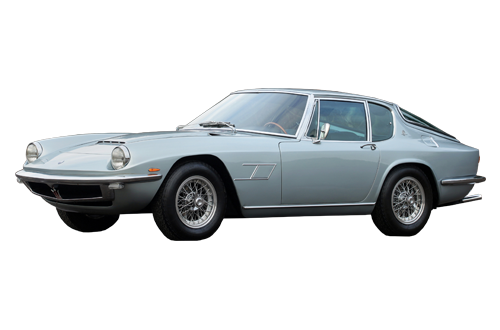
1963
The Maserati Mistral is born, inaugurating the tradition of sports cars by the Trident named after winds
Il Tridente inaugura la tradizione di chiamare con nomi di venti alcuni modelli sportivi: la prima è Mistral.
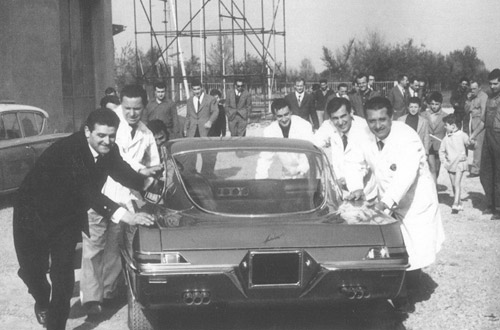
1963
Ferruccio Lamborghini was born, founder of the same named carmaker
Ferruccio Lamborghini fonda la sua casa automobilistica a Sant’Agata Bolognese e sceglie come simbolo il toro.
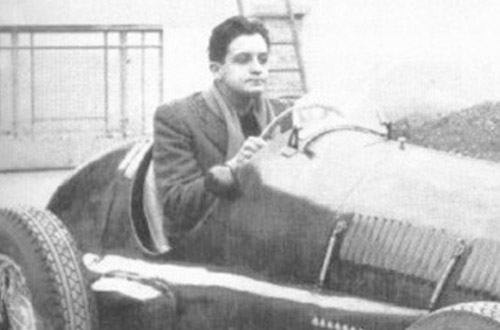
1963
The Alfredo “Dino” Ferrari High School is inaugurated at Maranello under the patronage of Enzo Ferrari. It still supplies specialised technicians to the company.
Enzo Ferrari fonda la prima scuola in Italia per formare tecnici specializzati nel settore dei motori.
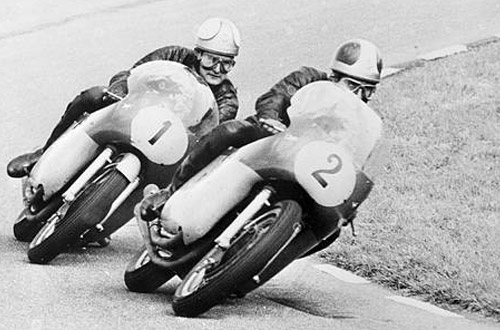
1965
Giacomo Agostini arrives at MV Agusta
Il pilota esordisce con MV Agusta, con la quale correrà fino al 1975, conquistando ben 15 Gran Premi.
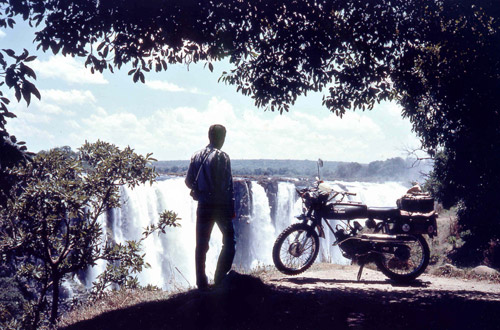
1966
On board a 49 cm3 Dingo Cross Guzzi, Roberto Patrignani covers 7,500 kilometres in the heart of Africa.
L’impresa è del giornalista e motociclista Roberto Patrignani: 7.500 km con un 49 cc nel cuore dell'Africa.
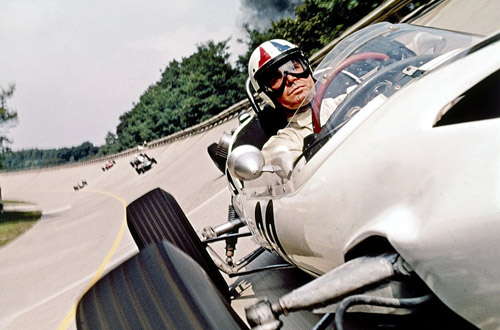
1966
The old Monza high speed ring is used as set for the ‘Grand Prix’ movie.
Sulla storica pista di alta velocità dismessa si gira Gran Prix di John Frankenheimer, vincitore di tre Oscar.
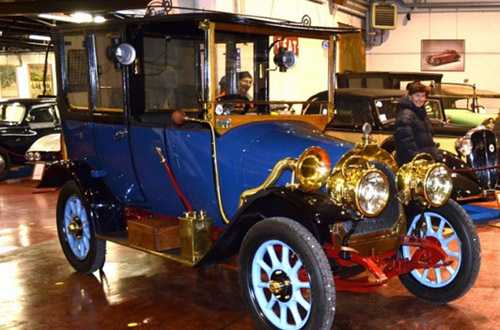
1966
Thanks to an agreement with the municipality, the San Martino in Rio collection becomes an official museum.
Grazie a un accordo con il comune, la collezione di San Martino in Rio diventa ufficialmente un museo.
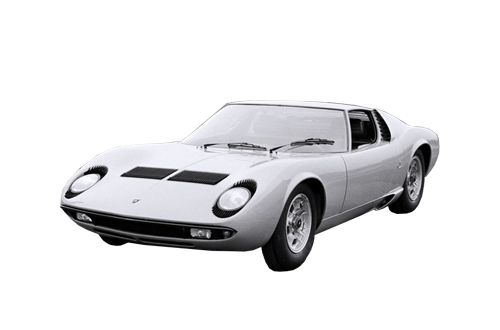
1966
Lamborghini produces the famous “Miura” thanks to the project of Gian Paolo Dallara and Paolo Stanzani
Presentata al Salone di Ginevra del 1966 la prima vera supercar moderna progettata dalla casa del Toro.
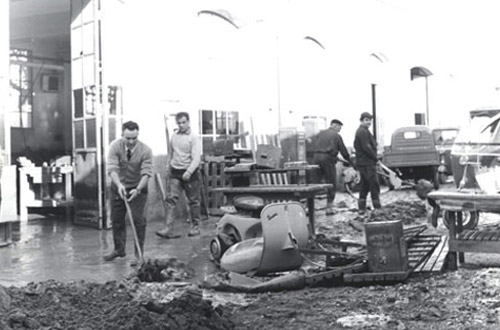
1966
The November floods also hit the Piaggio plant
Operai e dirigenti Piaggio salvano assieme lo stabilimento dall'acqua dopo un periodo di tensioni e scioperi.
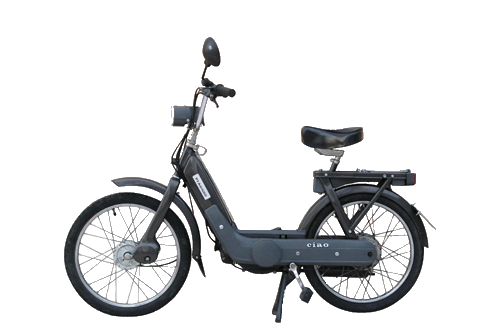
1967
Piaggio produced and commercialised the Ciao model
Il modello Ciao per Piaggio diventa simbolo della rinascita post-alluvione, e di libertà per i consumatori.
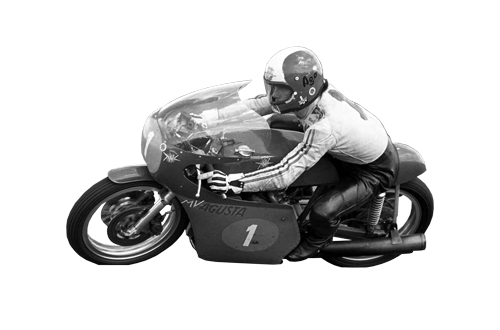
1968
Ivano Beggio takes control of Aprilia, starting the production of motorcycles.
Alberto Beggio la fonda nel 1945 come fabbrica di biciclette; il figlio Ivano segna la svolta verso i motori.
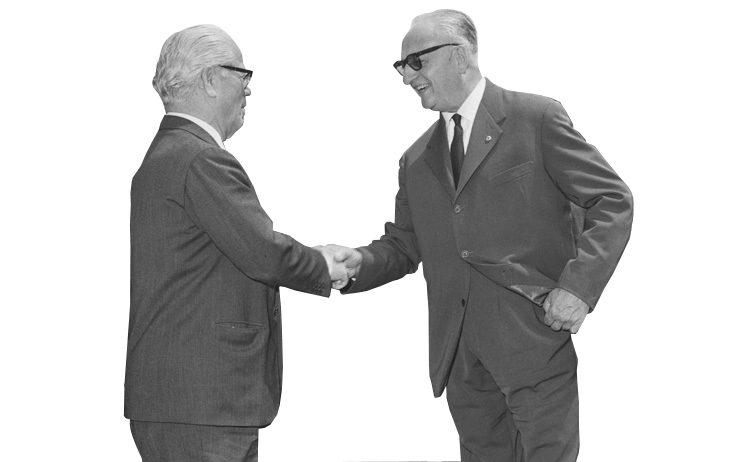
1969
Nuova Storie Evento Page-en
Il Drake cede al gruppo Fiat il 50% delle azioni per sostenere lo sviluppo dell’attività industriale.
The 70s
The seventies is an indefinite period: the explosion of the motoring market recorded in the previous decades tends to slow down and the car manufacturers face the change by studying new models and developing that distinctive design that decides the success of Italian productions worldwide. This decade is however a golden age for motor and motorcycling sports: great designers challenge each other on international circuits with experiments and bold innovations and the duels between drivers and racers thrill the Italians.
At the same time, a type of generational change takes place: several great founders leave the scene, as Ferruccio Lamborghini who sells the control of his creation, while new ambitious businesses that have a future of successes ahead of them on the circuit and in dealerships, make their debut, as Aprilia, a little artisan factory in the Venetian province destined to become the owner of the Grand Prix motorcycle racing in just two decades.
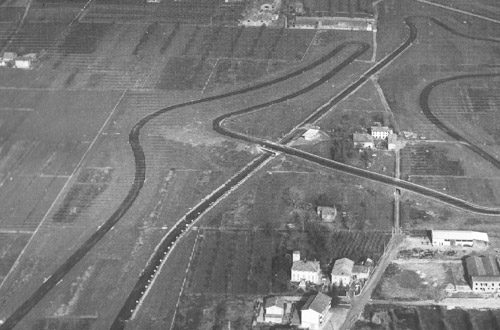
1972
Fiorano racetrack is built to test Ferrari cars.
Enzo Ferrari decide di costruire una pista per i test delle “Rosse”: la scelta ricade su Fiorano Modenese.
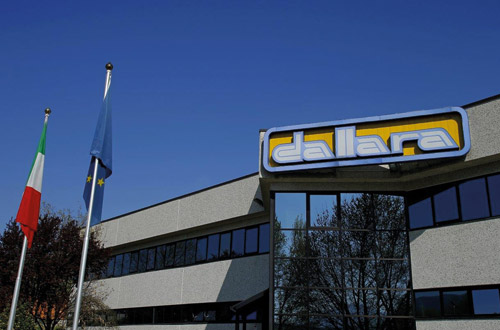
1972
Gian Paolo Dallara founds Dallara Automobili in Varano de' Melegari
Nel parmense Gian Paolo Dallara, dopo anni in Lamborghini, inizia a costruire le sue vetture da competizione.
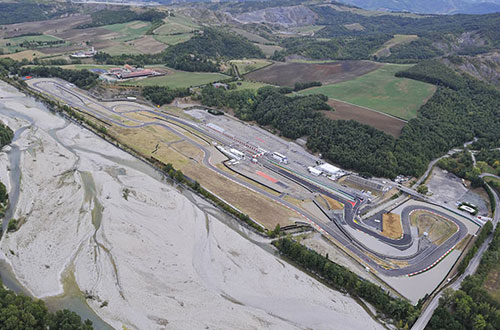
1972
Varano Racetrack officially inaugurated on the 26th March: the track is 1,800 meters long.
Il 26 marzo apre ufficialmente i battenti l’autodromo nel parmense: il tracciato misura 1.800 metri.
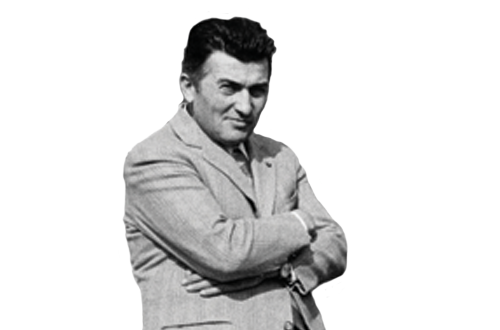
1974
Ferruccio Lamborghini sells the firm, but the Countach flies.
Per la crisi, l’imprenditore è costretto a vendere la sua creatura nonostante il successo della Countach.
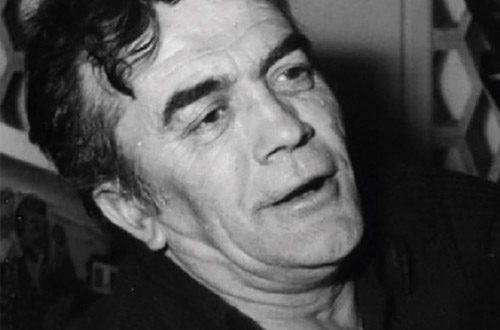
1975
Death of Barighin, one of the life-and-souls of the historical Automobile Museum of San Martino in Rio.
Muore "Barighin", uno degli animatori dello storico Museo dell'Automobile di San Martino in Rio.
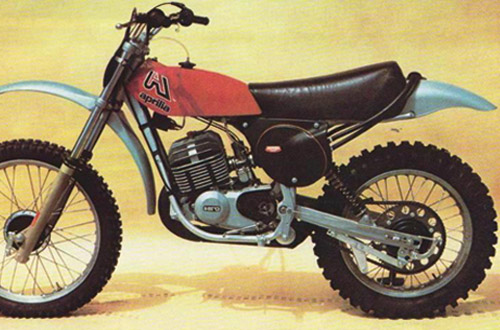
1975
The first racing Aprilia was constructed.
La casa di Noale approda alle competizioni nazionali e nel giro di due anni arrivano le prime vittorie.
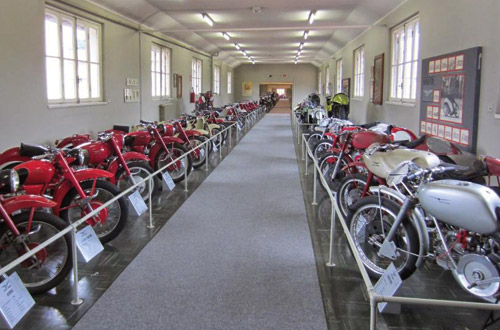
1977
The first exhibition, destined to become the Guzzi Museum, is staged.
Un gruppo di fan getta le basi per il Museo Moto Guzzi: più di 150 pezzi unici che hanno fatto storia.
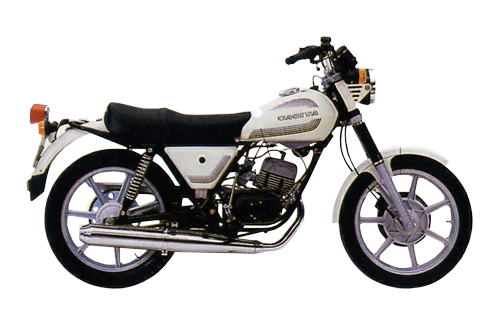
1978
Cagiva purchased Aermacchi and debuted in the world of motorcycles
La casa varesina acquisisce lo storico marchio dell’aviazione italiana e debutta nel settore motociclistico.
The 80s
The 80s mark a new period of development for the Italian motor industry. After the contraction of the previous decade, in which the industry responded with the diversification of the supply of new vehicles, there is now a recovery in the Italian car and two-wheel industry. The great "Made in Italy" companies challenge each other on a new field, the so-called "concept car", all innovation and aggressive lines, while new factories that produce increasingly accessorised and equipped consumer models open their doors to a new motorisation of the country.
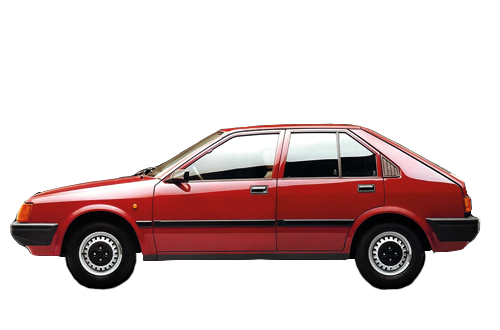
1980
Alfa Romeo and Nissan sign a joint venture leading to the opening of a factory in Pratola Serra
Le due case automobilistiche siglano una joint venture per produrre in Irpinia i modelli Arna e Alfa Romeo 33.
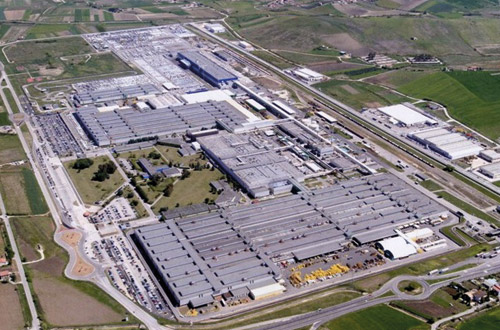
1981
The Sevel plant is established between Paglieta and Atessa.
La Società Europea Veicoli Leggeri apre in Val di Sangro il più grande stabilimento di categoria in Europa.
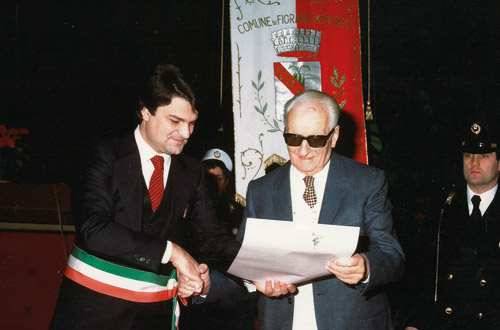
1982
Enzo Ferrari is awarded honourary Fiorano citizenship.
A dieci anni dalla costruzione della pista, il Drake è cittadino onorario del Comune di Fiorano Modenese.
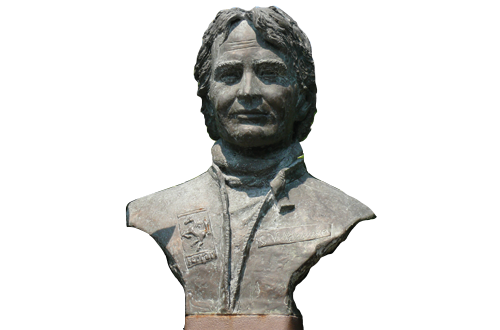
1983
Fiorano dedicates a monument to Gilles Villeneuve.
Fiorano Modenese dedica un monumento a Gilles Villeneuve, scomparso l'anno prima sulla pista di Zolder.
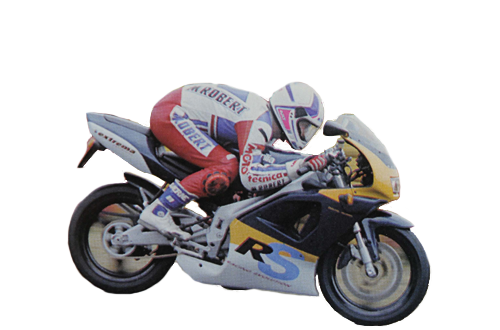
1985
Aprilia Racing debuts at the Road Racing World Championship Grand Prix.
Aprilia Racing inaugura con il pilota Loris Reggiani una storia di successi e di talentuosi piloti in sella.
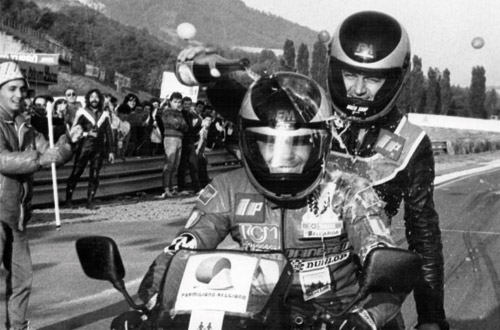
1986
At the Varano Racetrack the “Race for Life” takes place, a competition with the benefit scope that ends up in the Guinness Book or Records
In agosto tre motociclisti disputano una corsa a scopo benefico di 23 giorni non-stop: è subito record.
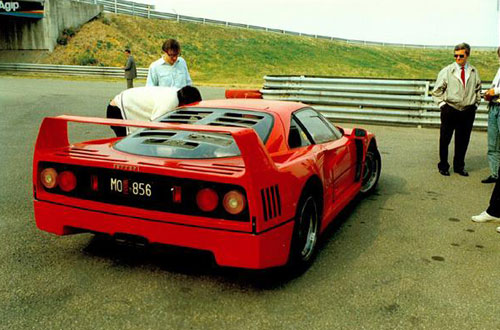
1988
Ferrari buys the Mugello Autodrome
La casa di Maranello acquisisce la proprietà dello storico autodromo toscano.
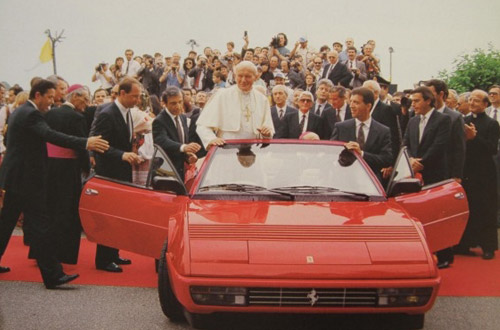
1988
Nuova Storie Evento Page-en
Papa Wojtyła, invece di salutare dalla "papamobile" bianca, sale su una Ferrari che messa a sua disposizione.
The 90s
In the 90s, the "great founders" are no longer and the motor industry definitely enters into its mature era, especially because of the opening of numerous museums that celebrate the great Italian brands and their history. A need to remember that is also a way to take stock of the future developments of an industry where there is so much competition, but the "Italian touch" is still able to make the difference and direct the industry.
Along with "museumisation", the phenomenon of rallies and re-enactments of historical races is also established, which are true shows where the masterpieces of the motor industry are the protagonists that fire up the fantasy of thousands of enthusiasts.
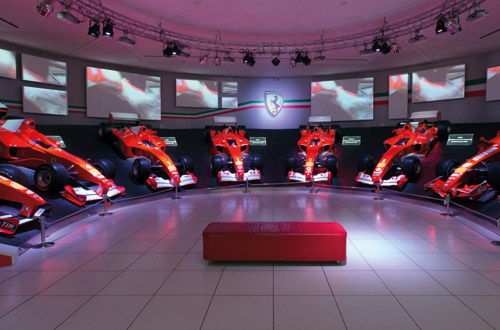
1990
The Ferrari Gallery opens, now called Ferrari Museum
L’ultimo progetto di Enzo Ferrari è dedicato alla memoria storica e sportiva della storia delle Rosse.
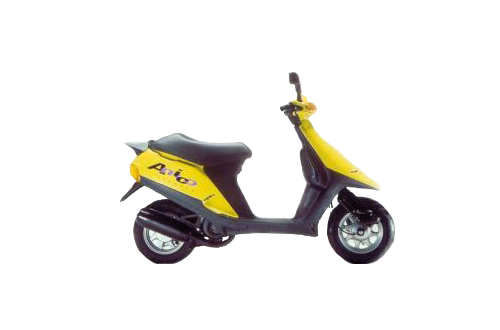
1990
Aprilia dedicates itself to the scooter sector with the "Amico", the first plastic model, followed by the famous "Scarabeo".
A Noale nasce Amico, il primo scooter urbano totalmente in plastica, cui seguiranno altri fortunati modelli.
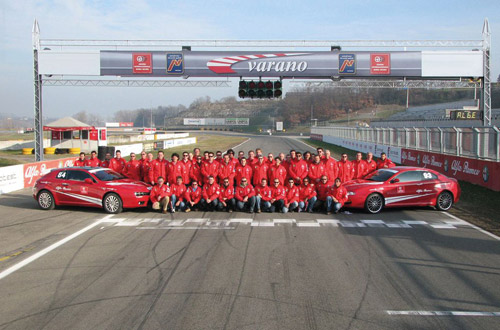
1991
The Varano Racetrack inaugurates its Centro Internazionale di Guida Sicura (International Centre for Safe Driving).
L'autodromo di Varano inaugura il Centro volto a migliorare la qualità di guida attraverso corsi e iniziative.
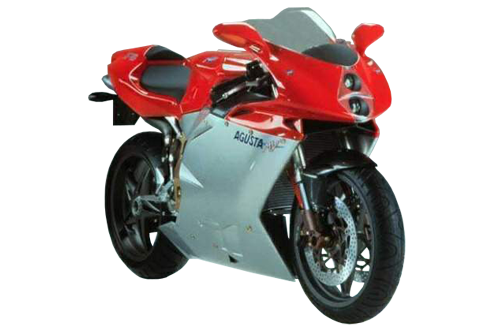
1992
The MV Agusta brand is relaunched by Cagiva, the “house of the elephant”
Lo storico marchio motociclistico torna sul mercato grazie alla conterranea "casa dell’elefantino", la Cagiva.
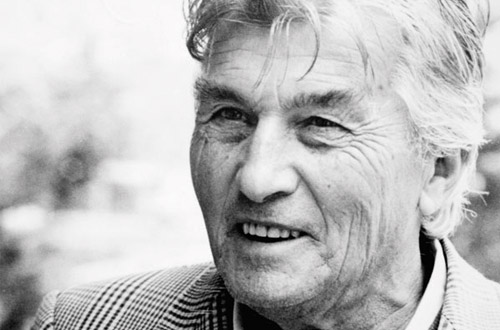
1993
In Sant'Agata Ferruccio Lamborghini dies on the 30th anniversary of the House of the Bull, but the myth continues.
L’imprenditore muore nel 30° anniversario della nascita della sua creatura, sopravvissuta ad anni difficili.
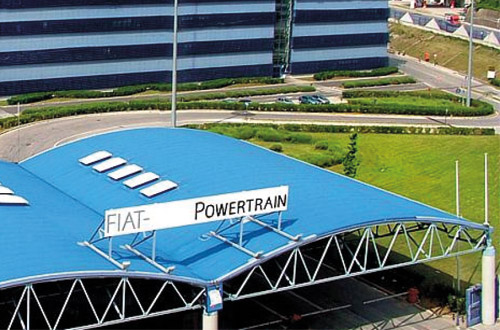
1994
Inauguration of the FMA, the Fiat plant for the production of automotive engines
Negli anni '90 lo stabilimento irpino diventa sede dell'impianto FMA e inizia a costruire motori per la Fiat.
1995
The first gathering of classic cars at Fiorano.
Da allora Fiorano ospita il raduno con tour all'interno del territorio che include la famosa pista Ferrari.
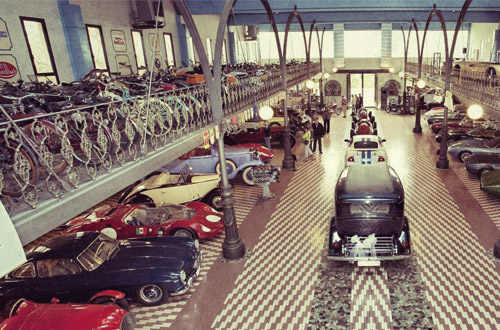
1996
Umberto Panini buys 19 antique Maserati cars destined for auction: the Umberto Panini Museum Collection is born.
L’imprenditore modenese salva 19 auto d'epoca Maserati da un'asta in Inghilterra e le mette in esposizione.
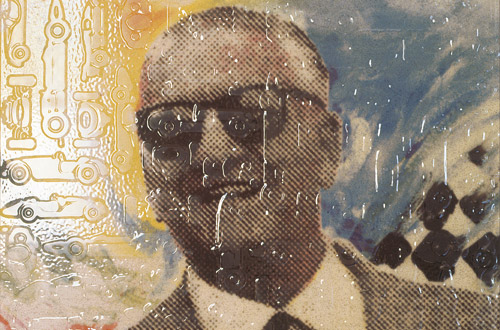
1998
The contemporary art section of Fiorano’s Ceramics Museum pledges a tribute to Enzo Ferrari.
Un evento dedicato al Drake arricchisce il Museo a Fiorano Modenese con opere firmate da ceramisti e designer.
The 2000s
The new Millennium witnesses a strong relaunching of great brands of the Italian motor industry, especially those in the highest segment that produce sports cars that today make us dream of the world more than ever. Factories expand and move towards new concepts and ways of interpreting factory work, while work continues to collect and re-propose historical memory, which has finally become a strategic heritage for the industry and country.
Italy continues to be a fertile cultivation ground for research and innovation in the motoring field and the custodian of skills that lead, sometimes, booking the trend, to the opening of new plants for all types of vehicles.
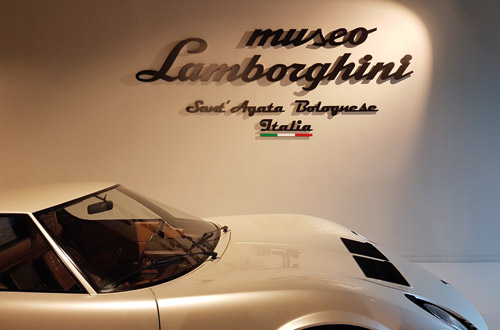
2001
The Lamborghini Museum at the Sant'Agata Bolognese plan is inaugurated
La casa del Toro apre il museo che celebra la sua storia con una selezione di vetture esposte a rotazione.
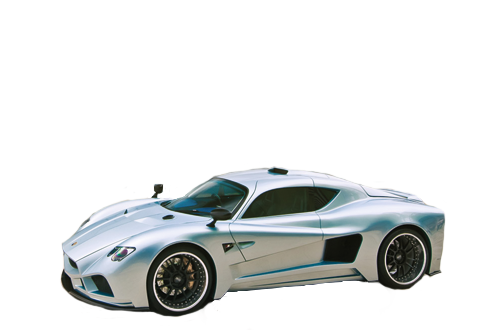
2002
F&M was born, progenitor of Mazzanti Automobili
Luca Mazzanti e Walter Faralli iniziano a costruire in Toscana le loro supercar "artigianali" e "sartoriali".
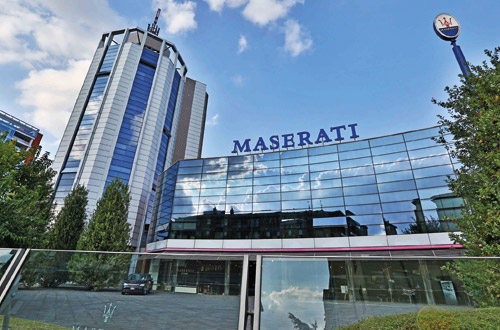
2003
The Maserati plant is renewed.
Lo stabilimento del Tridente a Modena aggiunge un nuovo centro direzionale e raggiunge 50.000 mq di superficie.
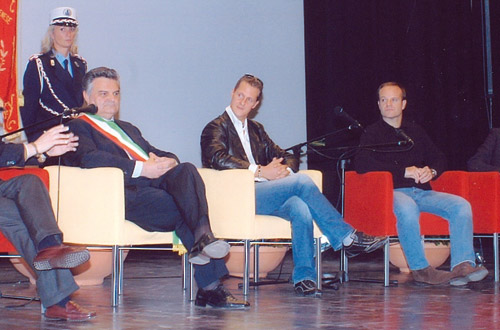
2004
Fiorano hands the keys to the city to Schumacher, Barrichello, Todt and Montezemolo.
Schumacher e Barrichello ricevono le chiavi di Fiorano assieme a Luca Cordero di Montezemolo e Jean Todt.
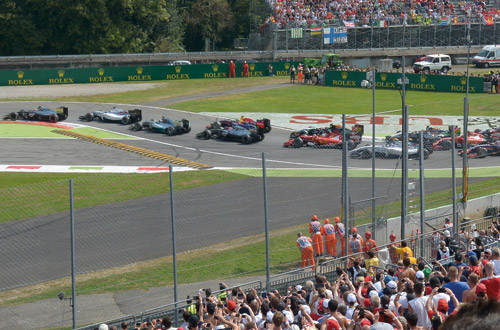
2004
Juan Pablo Montoya achieves the fastest lap in history on the Monza circuit
A Monza Juan Pablo Montoya registra il giro di pista più veloce mai fatto con una media di 262,24 km/h.
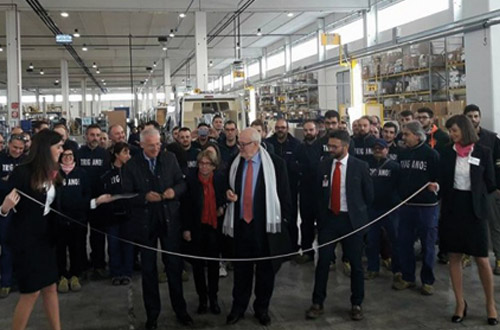
2004
The Trigano plant opens between Paglieta and Atessa.
La multinazionale francese sceglie l’area industriale tra Paglieta e Atessa per produrre camper e roulotte.
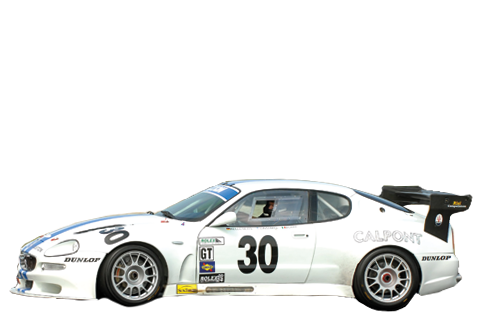
2004
Maserati makes its official return to races.
Dopo il lungo stop, il Tridente riprende una storia di trionfi e torna alle corse nella categoria Gran Turismo.
Tag:
Quattro Ruote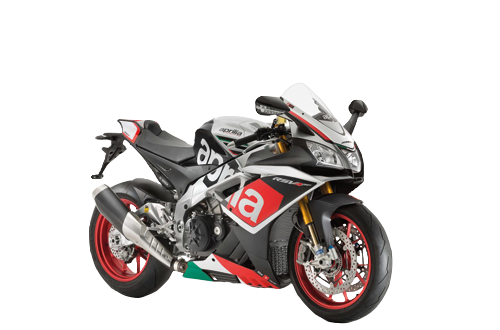
2004
Aprilia enters the Piaggio group
L’ingresso nello storico gruppo dà impulso alla produzione e inaugura una fortunata stagione di vittorie.
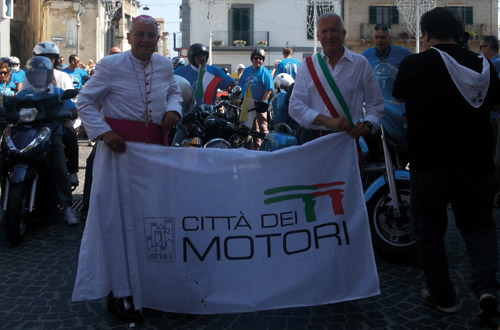
2007
First edition of the Paglieta National Solidarity Ride.
L’evento si svolge ogni anno nella provincia di Chieti per raccogliere fondi per i bambini del Borneo.
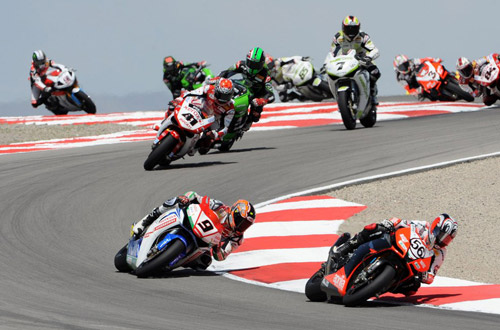
2009
Aprilia returns to Super Bike.
Con le sue supersportive, Noale torna alla massima categoria e si afferma nei grandi rally fuoristrada.
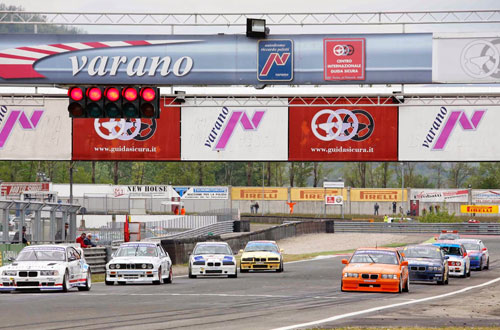
2010
Nuova Storie Evento Page-en
L'Autodromo di Varano assume l'aspetto attuale: una pista di 2.360 metri con licenza internazionale FIA.
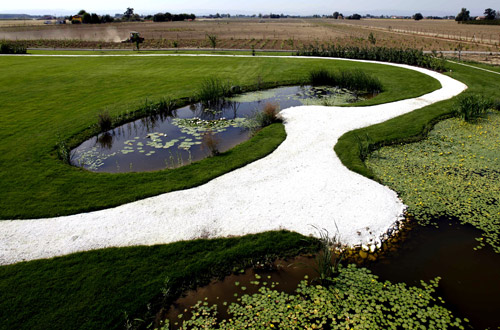
2011
The Lamborghini Park is inaugurated.
Con il Comune di Sant'Agata Bolognese, Lamborghini realizza uno spazio verde dedicato alla biodiversità.
Tag:
Siti culturali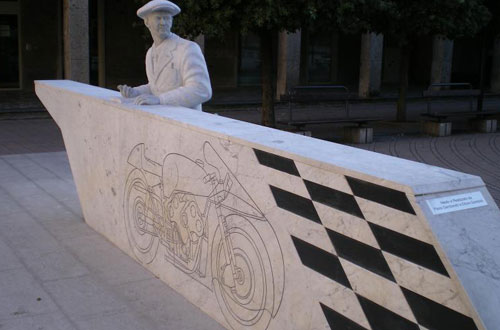
2011
The instatement of a monument to Carlo Guzzi at Mandello del Lario
Inaugura a Mandello del Lario un monumento dedicato al costruttore, opera di Ettore Gambioli e Paolo Gambelli.
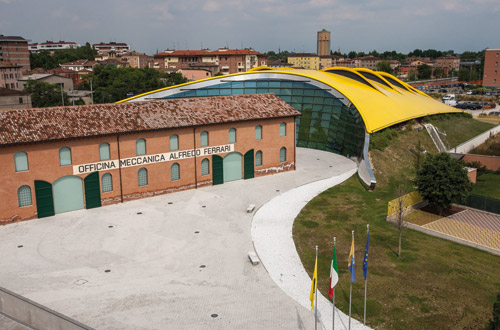
2012
The Enzo Ferrari Museum of Modena is inaugurated.
Un museo dedicato al Drake comprendente la casa natale e un'avveniristica struttura a forma di cofano giallo.
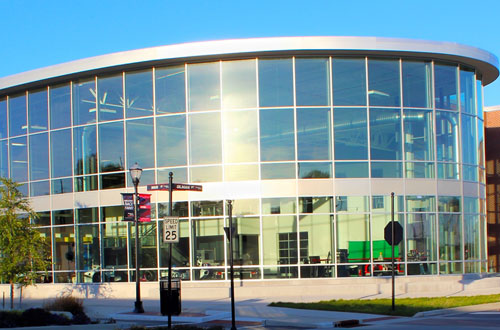
2012
Dallara Automobili arrives in Indianapolis, where it opens an engineering and assembly centre for racing cars.
Dallara Automobili apre negli Stati Uniti un centro di ingegneria e assemblaggio di auto da competizione.
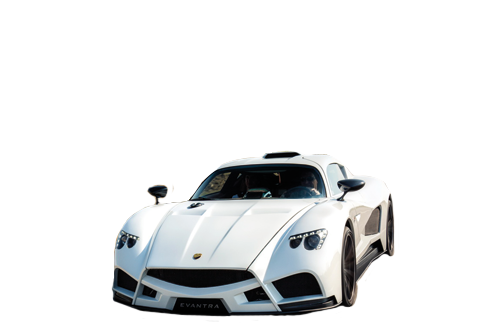
2013
The exclusive Mazzanti Evantra supercar arrived on the market
Comincia la produzione della supercar artigianale e ad alta tecnologia in soli cinque esemplari l'anno.
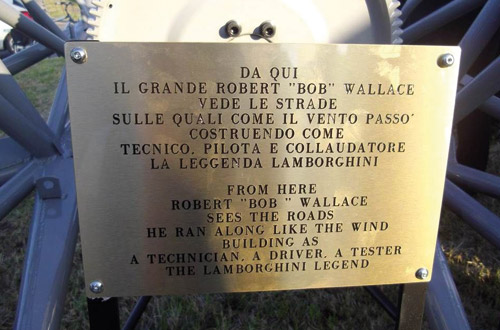
2015
The roundabout dedicated to the Lamborghini test driver Bob Wallace is inaugurated.
A Sant'Agata Bolognese inaugura una rotonda dedicata allo storico collaudatore neozelandese della Lamborghini.
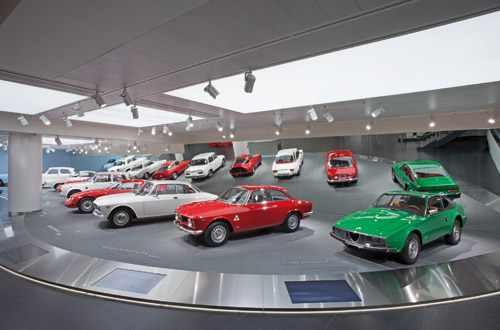
2015
The new Alfa Romeo Museum opens
La struttura celebra la casa del Biscione esponendo i 69 modelli che ne hanno segnato evoluzione e storia.
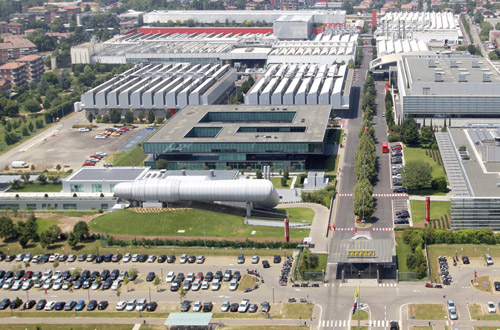
2016
The new Gestione Sporiva (racing department) at Ferrari is inaugurated: the last act in a renewal of business space begun in the 90’s under the sign of famous architects.
La "Cittadella Ferrari" è il "miglior luogo di lavoro al mondo" grazie a innovativi interventi architettonici.
What can you find at the Motor Web Museum?
The Motor Web Museum's cultural offer wishes to meet the interests of an audience of families, enthusiasts, scholars and tourists towards the Italian tradition in the motor industry, offering an experience that is simple to use, captivating and customisable.
- Organise
Travel and sightseeing ideas for your holiday
- Explore
Entertainment and discoveries for little ones
- Learn more
The history of Italian motors for true enthusiasts.

National Network of Motor Cities project
The National Network of Motor Cities was created to offer an innovative tourist experience to Italian motoring culture enthusiasts. The project aims at promoting Italy as the cradle of absolute excellence, recognised worldwide for technology, design and personalities and as protagonist of the technical and aesthetic development of one of the revolutionary cornerstones of the Twentieth century as the production of cars, motorcycles and more generally, motorised vehicles.
